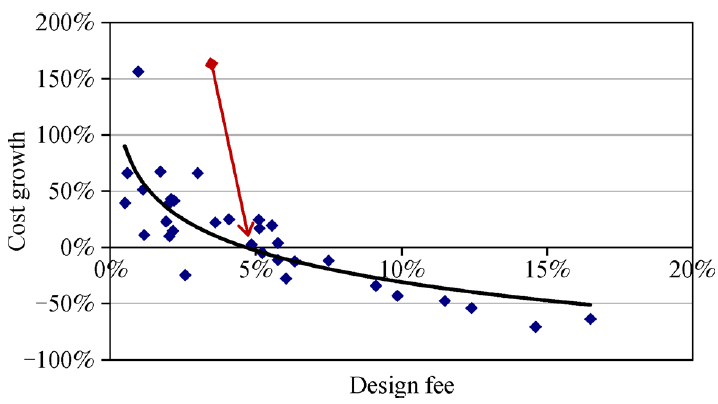ABSTRACT
The procurement of public construction projects must walk a fine line between the corruption of state officials and collusion of contractors. The method of awarding projects to the lowest responsible tenderer was originally implemented to guard against corruption of state officials. However, an investigation of the construction industry in the Canadian province of Quebec showed that lowest-tender-offer procurement gave rise to collusion of companies tendering for the contracts.
Alternatively, best value procurement has been used for decades, but here problems arise owing to the necessity of subjective judging of measures other than price to compare bids, giving rise to time-and money-consuming protests. The paper proposes a compelling argument that the construction engineering management (CEM) culture should refocus its efforts on enhancing project cost certainty rather than merely searching for means to design a project in a manner that produces the lowest initial cost, and awards the construction to the lowest tender offer that focuses on cost savings during the project development and delivery process.
The difference in the two approaches is subtle but extremely important. To make the transition, the engineering management tools must be advanced to the next level. This means that all project control tools for managing cost, schedule, and technical scope must be transformed from working in the deterministic mode to the stochastic mode, thus making the probability of completing the project within or below its official budget the primary decision criterion. To do so, CEMs must accept that there is a benefit in paying more for an alternative that increases cost certainty for the entire project. The authors of this paper hope that it will provide the grist for a more general dialog across all industry sectors where engineering management is practiced.
TENDER AWARD PROCEDURES
“About 150 years ago, our forefathers bestowed the competitive bidding concept on us in order to curb corruption, inefficiency, and mismanagement by government officials” (Harp, 1991). At this writing, the reader can add another 15 years to Harp’s 150 years, and the transportation sector still awards the majority of its projects to the “lowest responsive and responsible tender offer” (Tran et al., 2016). Most statutory definitions for competitive bidding procurement systems revolve around the following definition:
Low Tender Offer Award Procurement––A procurement process where the contract is awarded to the lowest responsive and/or esponsible tender offeror. (Tran et al., 2016).
VALUE FOR MONEY BY MAXIMIZING COST CERTAINTY

Fig. 1 Cost growth from initial estimate vs. design fee of total OTA population. Reprinted from (Gransberg et al., 2007) with permission from ASCE. The arrow shows the point where the initial estimate is reduced during preconstruction.
Figure 1 includes all projects regardless of technical complexity. The line is the best fit (R2 = 0.63). Intuitively, a client would expect to pay more for the design of a complex bridge project than it would for an asphalt overlay. Thus, it is important to split the population to validate this assumption.

Fig. 2 Cost growth from initial estimate vs. design fee of bridge projects from OTA population. Reprinted from (Gransberg et al., 2007) with permission from ASCE. The arrow shows the point where the initial estimate is reduced during preconstruction of bridge projects.
Figure 2 shows the results of regressing only the bridge projects. The figure not only confirms that the assumption is correct, but also confirms the trend with regard to the benefits accrued during construction as a result of increasing the investment in the preconstruction process. The high coefficient of determination (R2 = 0.93) testifies to the potential for increasing construction cost certainty by increased the investment in the cost of preconstruction.
CONCLUSIONS AND RECOMMENDATIONS
After describing the LTO and BVaward procedures, it was found that these still use the lowest cost metric, albeit in a disguised form. In BV, the attributes are still weighed against cost, and there is still the burden of proving that the client’s final cost will be lower (ultimately). The authors of this paper believe that the output of the above-described analysis makes a compelling argument that CEM culture should refocus its efforts on enhancing project cost certainty rather than merely searching for means to accrue cost savings.
The difference in the two approaches is subtle but extremely important. To make the transition, engineering management tools must be advanced to the next level. This means that all project control tools for managing cost, schedule, and technical scope must be transformed from working in deterministic mode to the stochastic mode, thus making the probability of completing the project at or below its official budget the primary decision criterion. To do so, CEMs must accept that there is a benefit in paying more for an alternative that increases the cost certainty for the entire project.
The authors of this paper hope that it will provide the grist for a more general dialog across all industry sectors where engineering management is practiced. Obviously, the details described above are only applicable to CEM in the transportation sector in North America. However, the paper’s fundamental theoretical construct is valid across all sectors. Moving from managing technical projects deterministically to minimize their costs, to managing the same projects stochastically, will have different levels of benefit in different market sectors. The philosophy of holding engineering managers accountable for finishing projects of all types according to the prework plan, budget, and schedule by measuring performance in terms of outcomes applies to all sectors. Now, hopefully, the dialog will begin.
Source: Iowa State Univer
Authors: Eric Scheepbouwer | Douglas D. Gransberg | Carla Lopez del Puerto